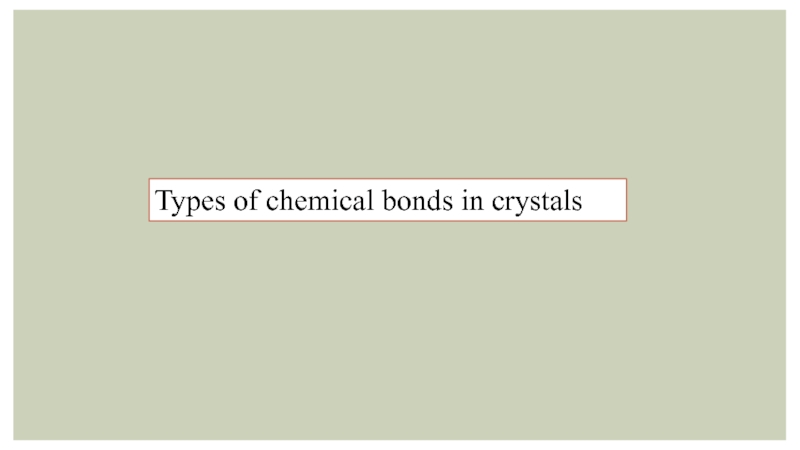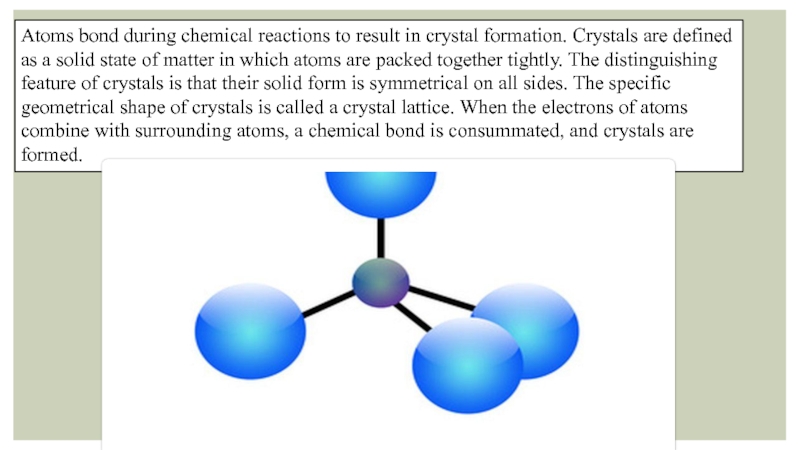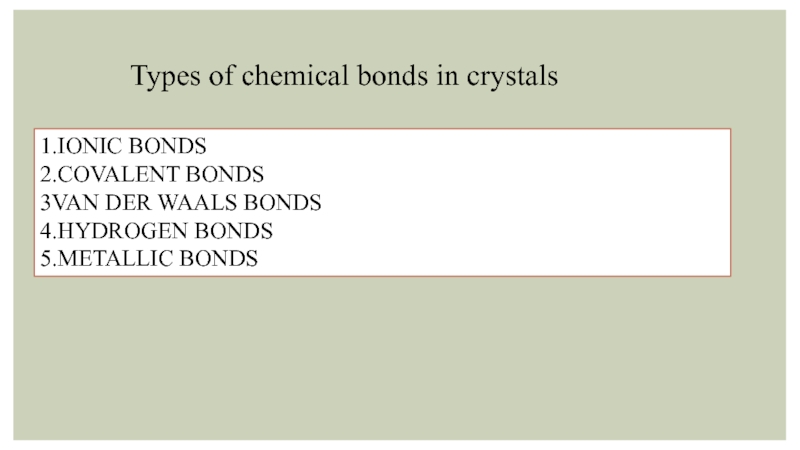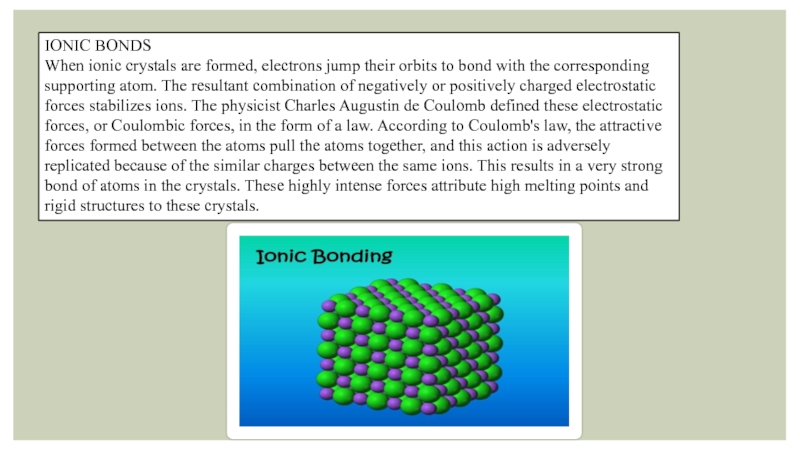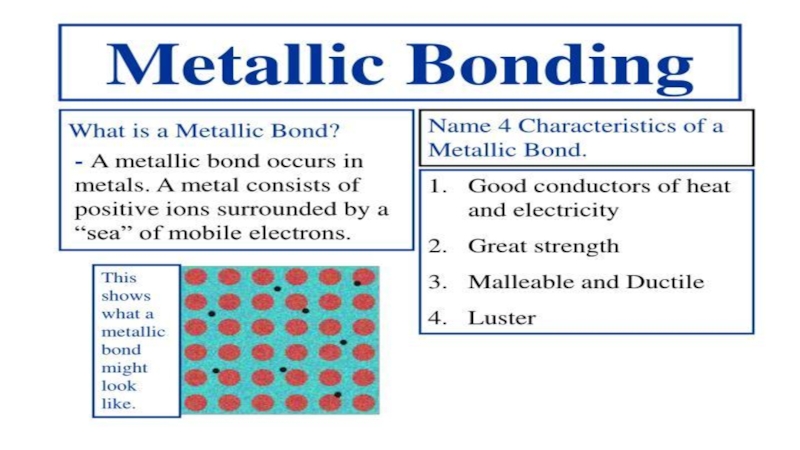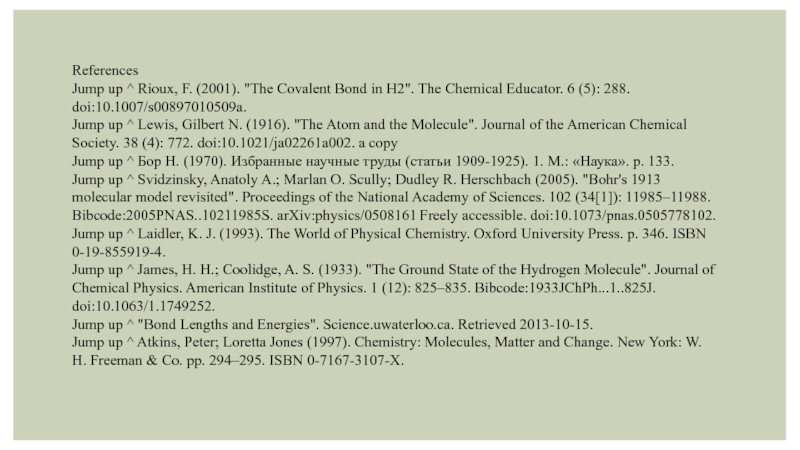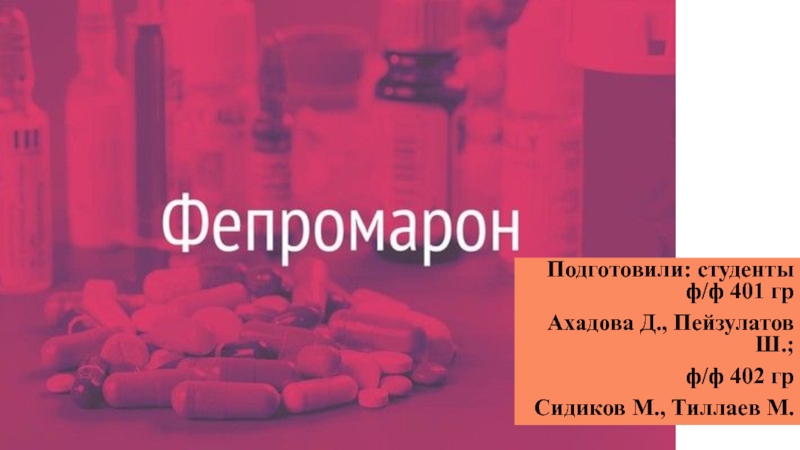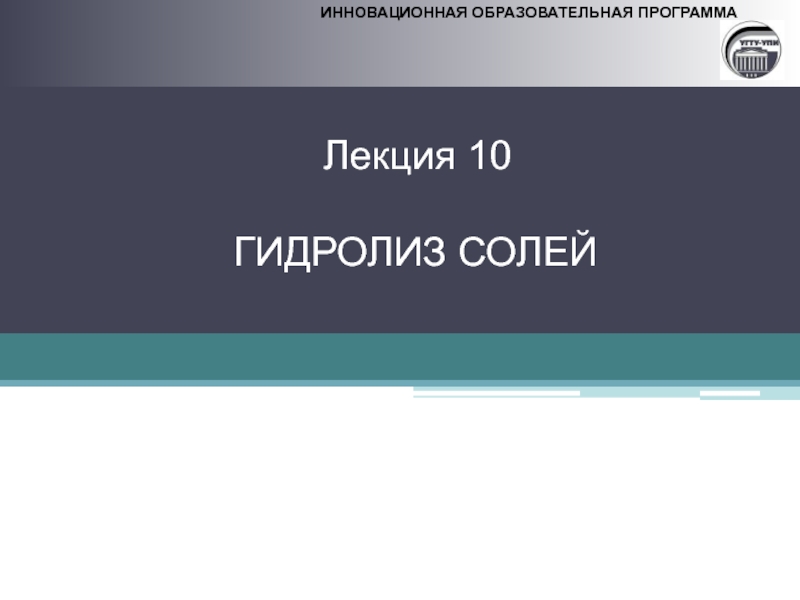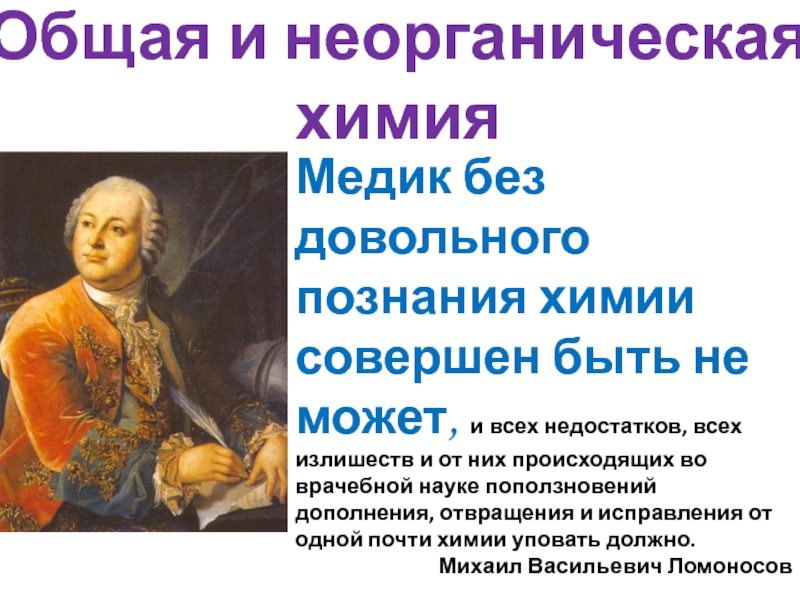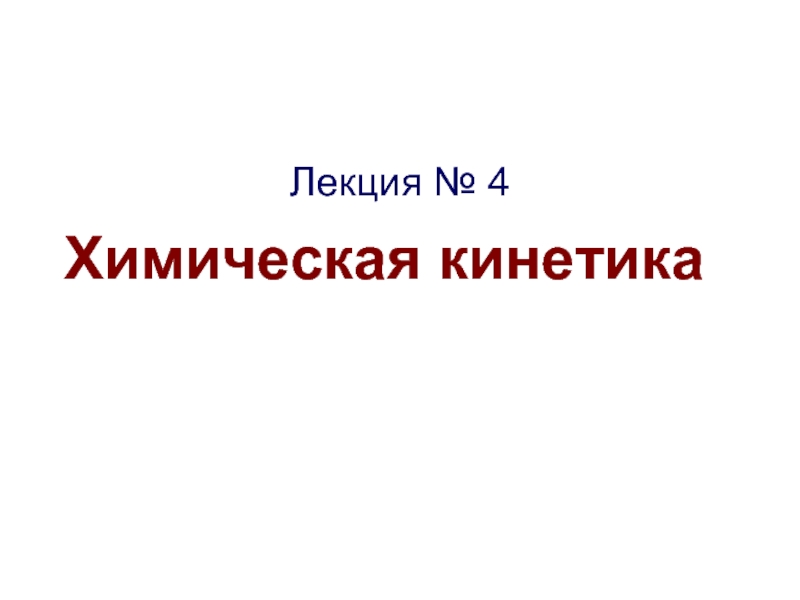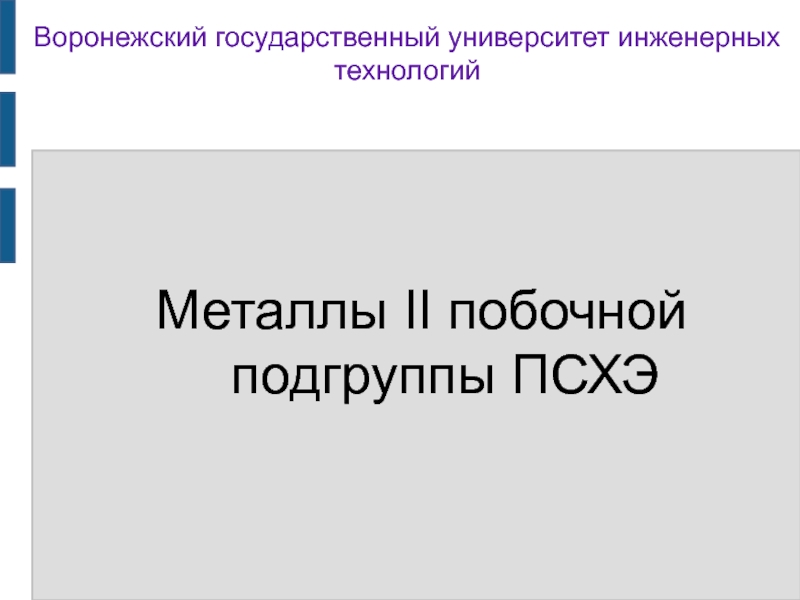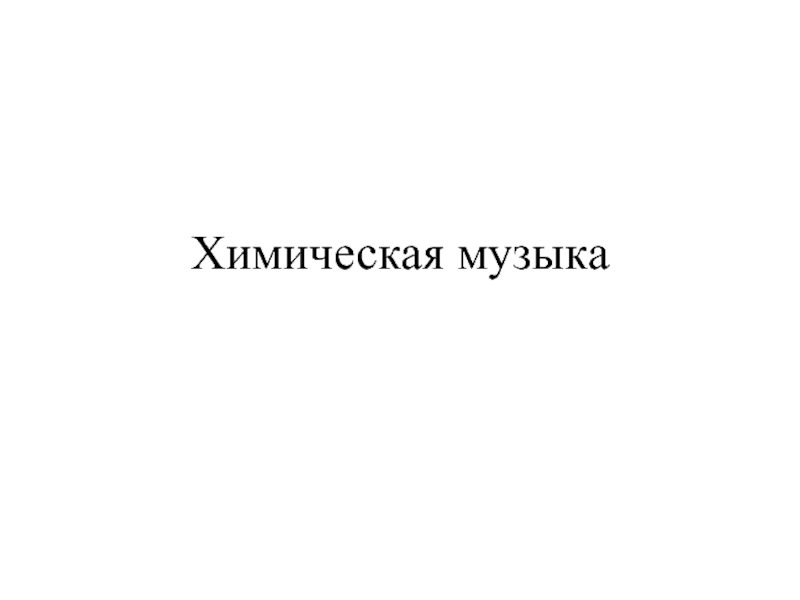- Главная
- Разное
- Дизайн
- Бизнес и предпринимательство
- Аналитика
- Образование
- Развлечения
- Красота и здоровье
- Финансы
- Государство
- Путешествия
- Спорт
- Недвижимость
- Армия
- Графика
- Культурология
- Еда и кулинария
- Лингвистика
- Английский язык
- Астрономия
- Алгебра
- Биология
- География
- Детские презентации
- Информатика
- История
- Литература
- Маркетинг
- Математика
- Медицина
- Менеджмент
- Музыка
- МХК
- Немецкий язык
- ОБЖ
- Обществознание
- Окружающий мир
- Педагогика
- Русский язык
- Технология
- Физика
- Философия
- Химия
- Шаблоны, картинки для презентаций
- Экология
- Экономика
- Юриспруденция
Types of chemical bonds in crystals презентация
Содержание
Слайд 2Atoms bond during chemical reactions to result in crystal formation. Crystals
are defined as a solid state of matter in which atoms are packed together tightly. The distinguishing feature of crystals is that their solid form is symmetrical on all sides. The specific geometrical shape of crystals is called a crystal lattice. When the electrons of atoms combine with surrounding atoms, a chemical bond is consummated, and crystals are formed.
Слайд 3Types of chemical bonds in crystals
1.IONIC BONDS
2.COVALENT BONDS
3VAN DER WAALS BONDS
4.HYDROGEN
BONDS
5.METALLIC BONDS
5.METALLIC BONDS
Слайд 4IONIC BONDS
When ionic crystals are formed, electrons jump their orbits to
bond with the corresponding supporting atom. The resultant combination of negatively or positively charged electrostatic forces stabilizes ions. The physicist Charles Augustin de Coulomb defined these electrostatic forces, or Coulombic forces, in the form of a law. According to Coulomb's law, the attractive forces formed between the atoms pull the atoms together, and this action is adversely replicated because of the similar charges between the same ions. This results in a very strong bond of atoms in the crystals. These highly intense forces attribute high melting points and rigid structures to these crystals.
Слайд 6VAN DER WAALS BONDS
A Van der Waals bond is a weak
interaction between the atoms of a substance, resulting in soft-consistency crystals. The outer orbit of the atoms is completely filled with shared electrons, but their charge keeps transferring.
Слайд 9References
Jump up ^ Rioux, F. (2001). "The Covalent Bond in H2".
The Chemical Educator. 6 (5): 288. doi:10.1007/s00897010509a.
Jump up ^ Lewis, Gilbert N. (1916). "The Atom and the Molecule". Journal of the American Chemical Society. 38 (4): 772. doi:10.1021/ja02261a002. a copy
Jump up ^ Бор Н. (1970). Избранные научные труды (статьи 1909-1925). 1. М.: «Наука». p. 133.
Jump up ^ Svidzinsky, Anatoly A.; Marlan O. Scully; Dudley R. Herschbach (2005). "Bohr's 1913 molecular model revisited". Proceedings of the National Academy of Sciences. 102 (34[1]): 11985–11988. Bibcode:2005PNAS..10211985S. arXiv:physics/0508161 Freely accessible. doi:10.1073/pnas.0505778102.
Jump up ^ Laidler, K. J. (1993). The World of Physical Chemistry. Oxford University Press. p. 346. ISBN 0-19-855919-4.
Jump up ^ James, H. H.; Coolidge, A. S. (1933). "The Ground State of the Hydrogen Molecule". Journal of Chemical Physics. American Institute of Physics. 1 (12): 825–835. Bibcode:1933JChPh...1..825J. doi:10.1063/1.1749252.
Jump up ^ "Bond Lengths and Energies". Science.uwaterloo.ca. Retrieved 2013-10-15.
Jump up ^ Atkins, Peter; Loretta Jones (1997). Chemistry: Molecules, Matter and Change. New York: W. H. Freeman & Co. pp. 294–295. ISBN 0-7167-3107-X.
Jump up ^ Lewis, Gilbert N. (1916). "The Atom and the Molecule". Journal of the American Chemical Society. 38 (4): 772. doi:10.1021/ja02261a002. a copy
Jump up ^ Бор Н. (1970). Избранные научные труды (статьи 1909-1925). 1. М.: «Наука». p. 133.
Jump up ^ Svidzinsky, Anatoly A.; Marlan O. Scully; Dudley R. Herschbach (2005). "Bohr's 1913 molecular model revisited". Proceedings of the National Academy of Sciences. 102 (34[1]): 11985–11988. Bibcode:2005PNAS..10211985S. arXiv:physics/0508161 Freely accessible. doi:10.1073/pnas.0505778102.
Jump up ^ Laidler, K. J. (1993). The World of Physical Chemistry. Oxford University Press. p. 346. ISBN 0-19-855919-4.
Jump up ^ James, H. H.; Coolidge, A. S. (1933). "The Ground State of the Hydrogen Molecule". Journal of Chemical Physics. American Institute of Physics. 1 (12): 825–835. Bibcode:1933JChPh...1..825J. doi:10.1063/1.1749252.
Jump up ^ "Bond Lengths and Energies". Science.uwaterloo.ca. Retrieved 2013-10-15.
Jump up ^ Atkins, Peter; Loretta Jones (1997). Chemistry: Molecules, Matter and Change. New York: W. H. Freeman & Co. pp. 294–295. ISBN 0-7167-3107-X.
